Growing horses have some special nutritional needs. Find out what to feed from foaling to age 2 for optimal young horse nutrition.
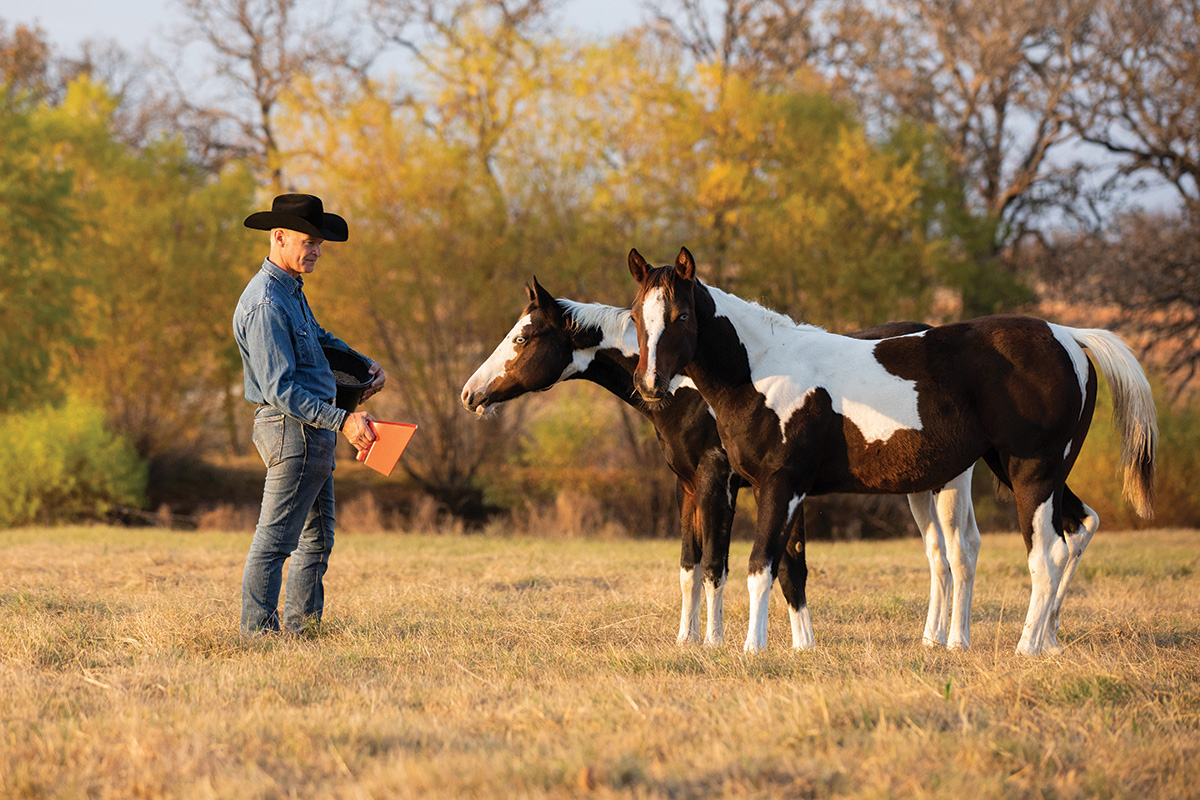
Nutrition During the Mare’s Third Trimester
Providing foals and young horses good nutrition begins before they’re born. Some of the most critical nutrients are needed during the mare’s third trimester of pregnancy, according to Rhonda Hoffman, Ph.D., professor and director of horse science at Middle Tennessee State University.
“The foal fetus grows to only 20 percent of its birth weight during the first 7 ½ to 8 months of pregnancy, and 80 percent in the last trimester,” says Hoffman. “Those last three months are critical for the foal’s bone development and its storage of trace minerals, which are not supplied in milk.”
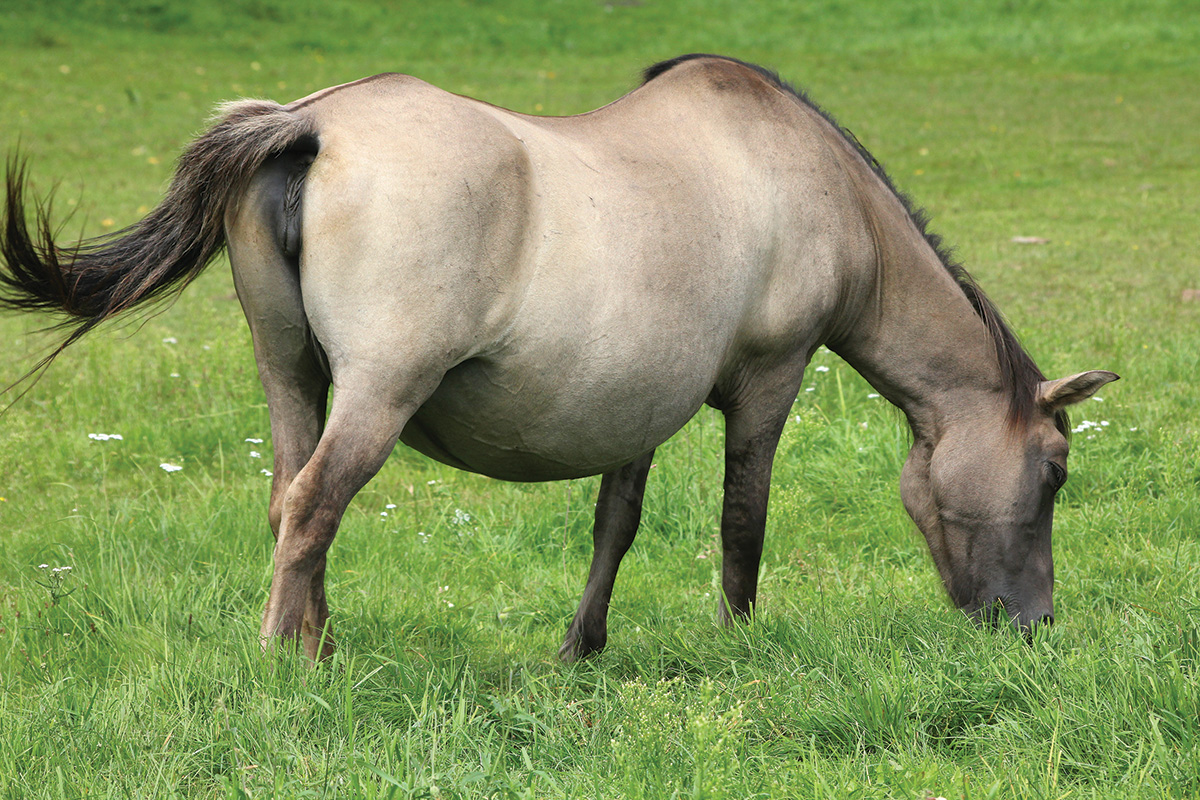
Trace minerals include copper, zinc, iron, selenium, iodine, and others. Hoffman points to a 1998 New Zealand study that proved pregnant mares deficient in trace minerals during late pregnancy had foals more likely to develop osteochondrosis dissecans (OCD) joint lesions. The study also showed that foals deprived of nutrients in utero could not “catch up” to foals whose dams were fed a balanced diet during late pregnancy, regardless of what they were fed after birth.
Hoffman recommends feeding a “mare and foal” or “growth” feed in the eighth through the final month of pregnancy. Following feed tag instructions for how much to feed is essential; these formulations are guaranteed by law to meet the needs of broodmares and foals.
“In addition to the feed, mares and foals should be allowed to graze pasture, if available, and/or fed a high-quality hay,” she adds.
Nutrition from Foaling to 3 Months
The mare’s milk is the foal’s first food supply. Her colostrum (first milk) is nutrient-dense and shares her antibodies to support the foal’s immunity.
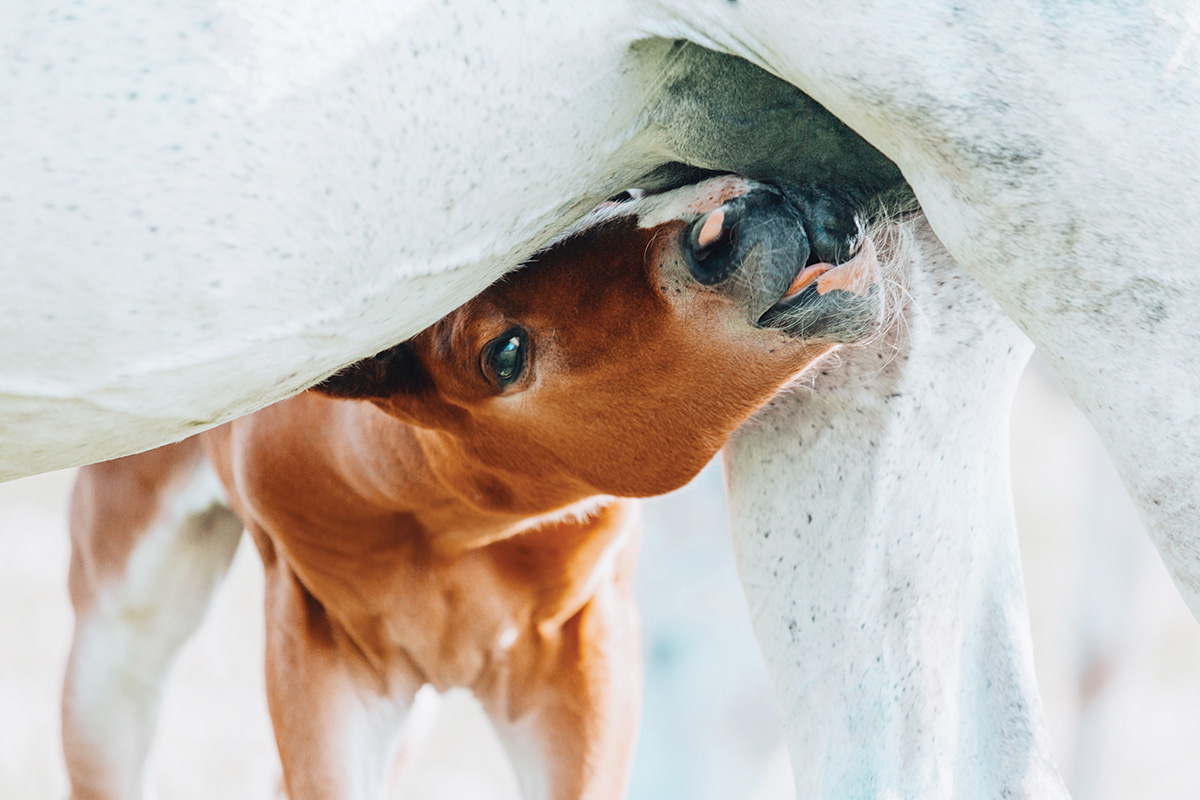
“Look for feeds labeled as ‘mare and foal’ or ‘growth’; they should be highly palatable and range from 16 to 18 percent crude protein,” says Jessica Leatherwood, Ph.D., associate professor and equine nutritionist in the Department of Animal Science at Texas A&M.
A dam’s milk production peaks about two months post-foaling. By the time her foal is 3 months old, a mare’s milk supply steadily declines. So-called “creep feeding” the foal is recommended to compensate, according to Leatherwood.
Creep feeding provides foals with access to an appropriately formulated feed while restricting the mare’s access to the ration. Feeder height can keep foals from helping themselves to mom’s ration, while feeders with small openings can keep the mare out of her foal’s grain meal.
“Feeding the mare and foal separately through the use of a creep feeder ensures the grain is formulated to meet the foal’s requirement and gives us an idea of the foals daily intake of grain,” Leatherwood explains.
Continuously monitor your foal’s body weight and body condition to ensure a consistent plane of growth. Fat first fills in over the loin, withers and tailhead.
“It’s common and OK to see the slight outline of ribs on the foal at this time,” Hoffman says. “Foals alternate between growth spurts and adding body fat. The ribs are one area where they are slow to accumulate fat.”
If you’re concerned that the foal looks too ribby or is growing too slowly, Hoffman recommends talking with your veterinarian.
Nutrition from Three to 6 Months
Texas A&M University raises about 15 foals per year. At this stage, foals receive a mare and foal or growth feed twice a day, according to Leatherwood. Appropriately formulated grain provides both the calories and nutrients required during mom’s declining milk supply and prepares the young horse for the upcoming weaning process.
“Foals may have unlimited access to a creep feed until they consume 4 to 5 pounds daily,” she says. “At this stage, their hind gut and large intestine are not developed enough to extract nutrients from forage, and therefore their diet consists primarily of grain with little forage.”
The American Association of Equine Practitioners (AAEP) recommends starting “by feeding 1 percent if a foal’s body weight per day. For example, 1 pound of feed for each 100 pounds of body weight, or 1 pound of feed per month’s age.”
Nutrition from Six to 12 Months
Foals undergo a signification transition period halfway to their first birthday. Most foals are weaned at or by 6 months old. A balanced formulated feed is essential for supporting foals during this stressful transition. The weaning process activates cortisol, a stress hormone that can compromise a foal’s immune response.
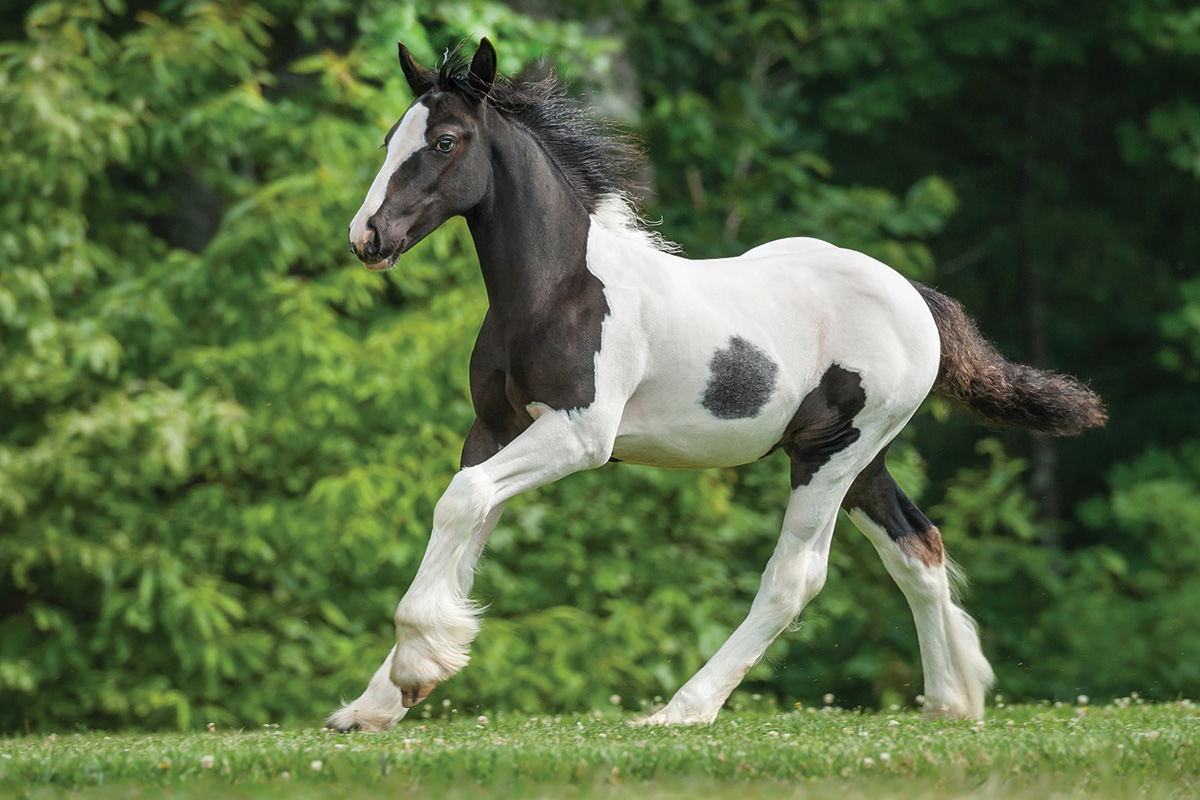
By now, all the foal’s nutrition must come from a source other than mom. Most light breed foals are eating 4 to 6 pounds of concentrate feed along with hay and grass. However, Hoffman cautions that weanlings are not reliable in their hay consumption. If you compare pounds of concentrate eaten to the pounds of hay eaten, weanlings might voluntarily eat a dietary proportion of 60 to 70 percent concentrate and 30 to 40 percent forage, she says.
“Most owners rely a lot on forage, but that can be deficient in this age group,” says Leatherwood. “Giving a concentrate that provides enough minerals and other nutrients at their appropriate ratios is critical to support skeletal development.”
Access to fresh pasture may increase a foal’s forage intake, but because most grass is typically dwindling by the fall when most horses are weaned, higher quality hay is necessary. Hoffman recommends a grass-alfalfa mix or high-quality grass hay. Alfalfa is high in calcium, so if fed, the concentrate chosen should be labeled as balanced to accompany alfalfa hay.
“There’s an old horsemen’s practice of feeding oats and alfalfa to growing horses, with the idea that the oats’ high phosphorus balances out the alfalfa’s high calcium,” Hoffman says. “It generally does, but it’s not recommended because this diet lacks the essential amino acid lysine, which is critical for optimal growth, and it’s marginal or deficient in other amino acids, vitamins and minerals.”
Nutrition from Yearling to 2-Year-Old
Yearlings continue to grow, but not as rapidly as during their first year of life. Research suggests that light-horse yearlings are about 64 percent of their mature height at 12 months of age and grow to 86 percent of their mature height by 24 months, according to Hoffman.
“Many yearlings come out of a growth slump [over the] winter and have a compensatory growth spurt when spring pasture appears,” she says. “Keep a keen eye on their joints at this time. Look for epiphysitis—ridges at the top and bottom of knees and fetlocks—that indicate an inflammation of the growth plate. Also watch for extra fluid or swelling in the joints, especially knees, fetlocks and stifles; lameness; or crooked leg conformation from uneven growth.”
To a mild degree, all of the above are normal and temporary in every growing horse, but if the issue seems extreme or persists, talk to your veterinarian. Overfeeding or feeding an unbalanced diet, along with genetics, can increase a growing horse’s chances of developing joint issues, so it is critical for a young horse’s nutrition to feed appropriate rations.
“It may be hard to believe, but the total calorie requirement of a 12-month-old and a 24-month-old horse is quite similar, even considering that the 24-month-old is physically larger,” says Hoffman.
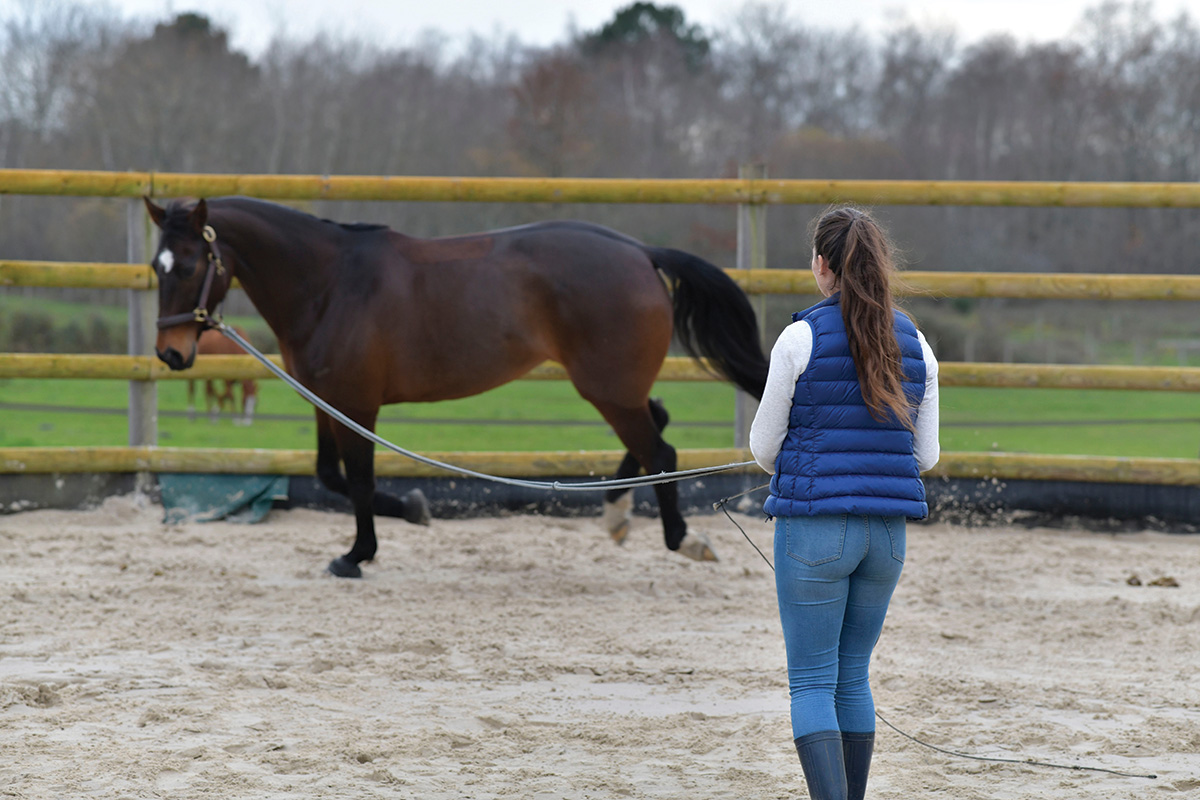
Nutritional needs will change, however, whenever that young horse begins his training. When that happens, an older yearling or 2-year-old needs to meet the demands of exercising and growing.
Adding exercise and learning stress can increase caloric needs by 20 to 30 percent above growth alone, and protein needs by 10 to 15 percent. Horses started in training at 18 to 24 months of age should be transitioned to a performance-based concentrate.
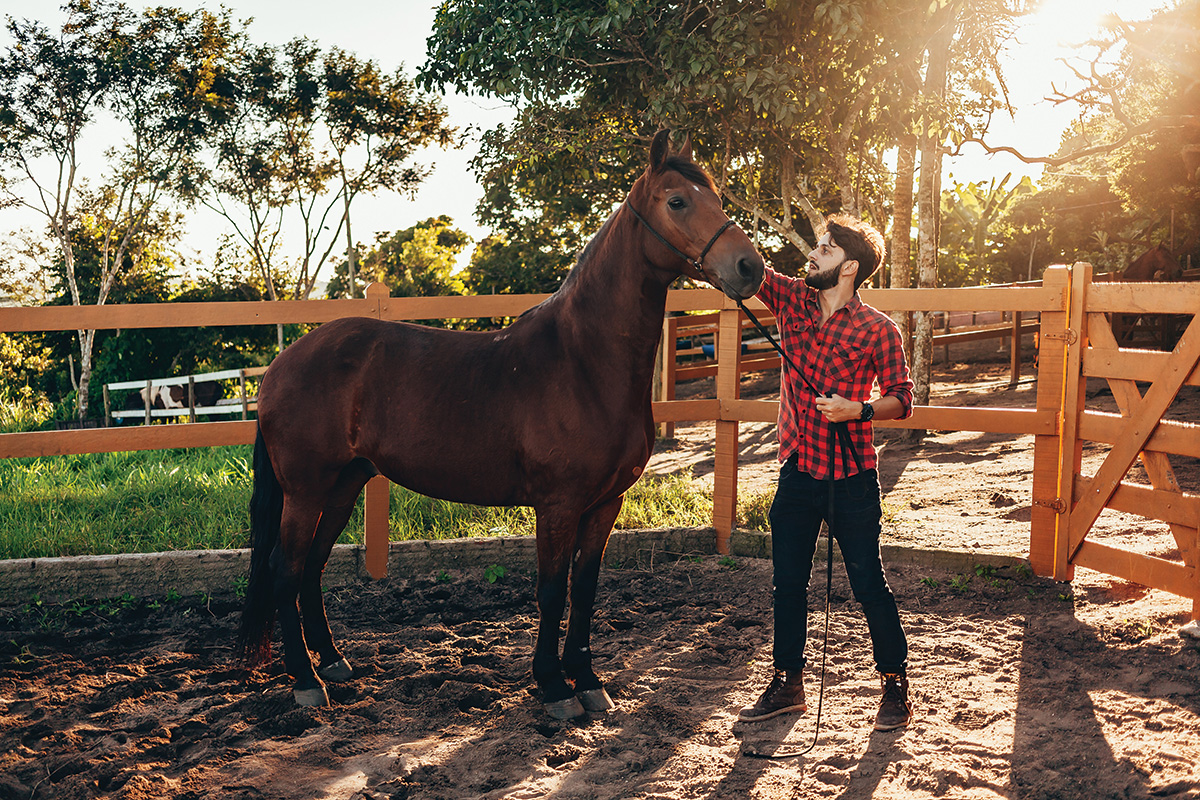
“Twelve to 24-month-old horses are becoming more reliant on forage, but forage alone still does not provide enough to meet their nutritional needs,” Hoffman continues. “Plan on dietary proportions of 50 percent grain concentrate and 50 percent forage.”
This article about young horse nutrition appeared in the January/February 2023 issue of Horse Illustrated magazine. Click here to subscribe!





